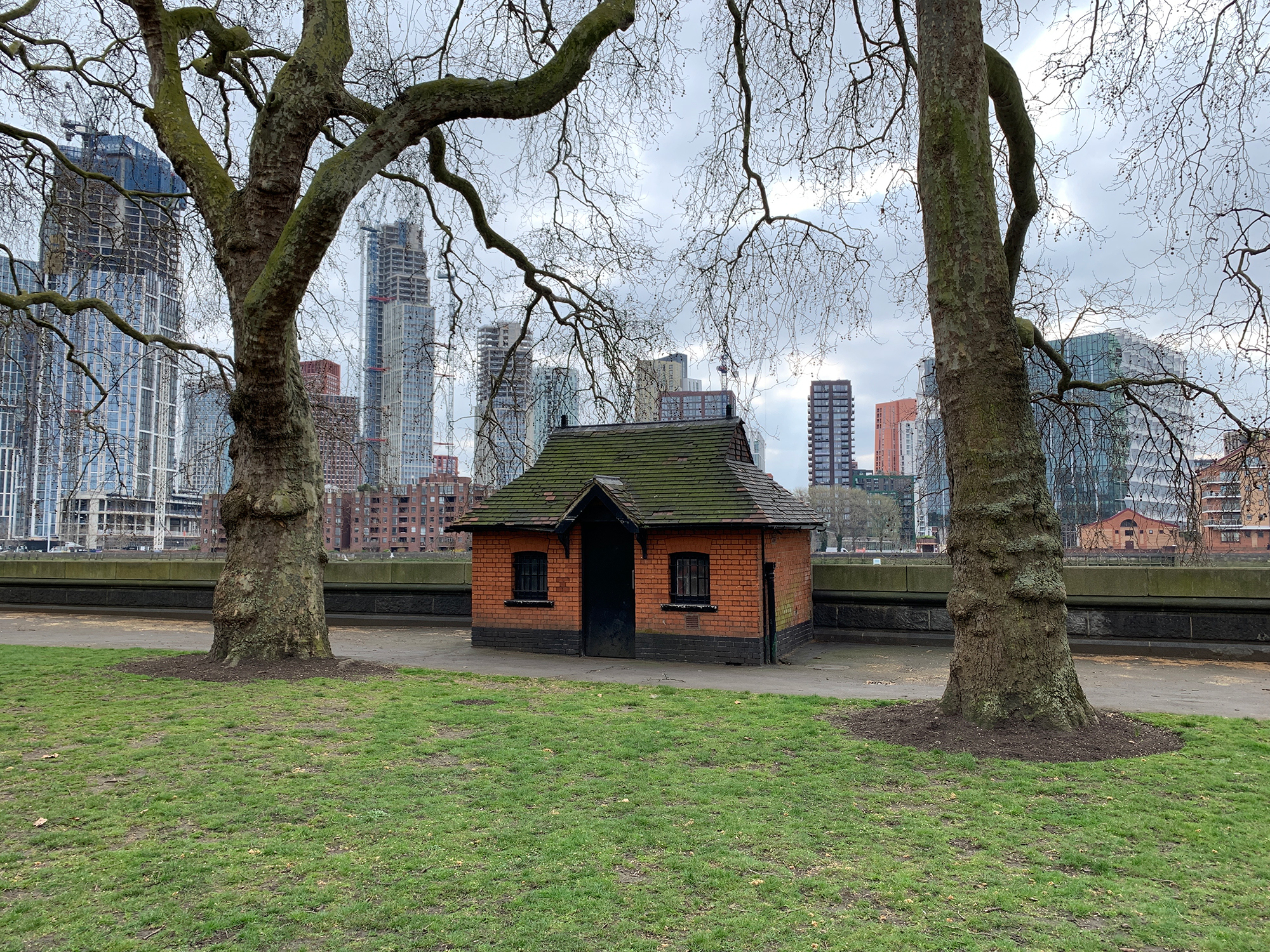Little House
1.4.21I have spent much of Lockdown_3 redesigning this website, which I have just uploaded. This means I can now return to Model Village, and will mark this moment (somewhat aptly, on April Fool’s Day) with three pictures from recent separate outings.
I use the term Little House here to describe small buildings and structures whose shape, detailing and position embues them with the aura of a fairy tale cottage or cabin that is hidden or tucked-away. Ideally this quality has occurred unwittingly, rather than knowingly, by design.
I use the term Little House here to describe small buildings and structures whose shape, detailing and position embues them with the aura of a fairy tale cottage or cabin that is hidden or tucked-away. Ideally this quality has occurred unwittingly, rather than knowingly, by design.



The first picture is of the gardener’s hut in Pimlico Gardens, overlooking the vast redevelopment of Nine Elms across the river. A tiny Victorian brick cottage, whose detailed construction suggests it once served a more communal purpose, such as a public venue for refreshments. But now it sits forlornly, in front of a rapidly globalising skyline; existing merely to house maintenance equipment, and probably the gardener’s tea-making facilities.
The second is in fact a water pumping station in the Ver-Colne Valley near Watford. While it isn’t particularly small, it does work quite hard to imitate a country cottage. I saw two of them on my walk, and they were identical, so perhaps there are more dotted around the valley. Its rustic timber-clad gables and high-pitched clay roof evince a sensitivity to local building styles and neighbourly appeasement. This might have allowed it to blend into its surroundings, had it not been for the absence of any windows and ground floor detailing.
The third is a duck house on Hadley Green in Barnet.
The second is in fact a water pumping station in the Ver-Colne Valley near Watford. While it isn’t particularly small, it does work quite hard to imitate a country cottage. I saw two of them on my walk, and they were identical, so perhaps there are more dotted around the valley. Its rustic timber-clad gables and high-pitched clay roof evince a sensitivity to local building styles and neighbourly appeasement. This might have allowed it to blend into its surroundings, had it not been for the absence of any windows and ground floor detailing.
The third is a duck house on Hadley Green in Barnet.


 Little house/cottage imagery: cover image from the original book A Little House on the Prairie (1935) and my mother’s rural fantasy encapsulated in a plastic tray.2
Little house/cottage imagery: cover image from the original book A Little House on the Prairie (1935) and my mother’s rural fantasy encapsulated in a plastic tray.2 The truth is I have always been drawn to little houses like gardener’s huts and the cabbie’s shelters dotted around London streets. This fascination probably stems back to my own early childhood of doll’s houses and wendy houses, followed later by 70s TV shows like A Little House on the Prairie: seen then as a wholesome portrayal of the challenges of rural life for a family of late 19th century American western (white) homesteaders.



Little houses have featured in my previous work: a garden shed mini-cinema for my MA show; in Optimology ‘Sculptors’, playhouses and static pitch-roof caravans reflect Anaïs Nin’s wistful words as part of the strand Subtitled Stills from Non-Existent Foreign Films and ‘The Pavilion’ parodies sales details for a local park’s cricket hut in The Bijou House.
1Pictures of gardener’s hut and cabbie’s shelter: Wikimedia commons.
2My mother’s rural fantasy encapsulated in a plastic tray: Cottagecore 27.7.20
2My mother’s rural fantasy encapsulated in a plastic tray: Cottagecore 27.7.20